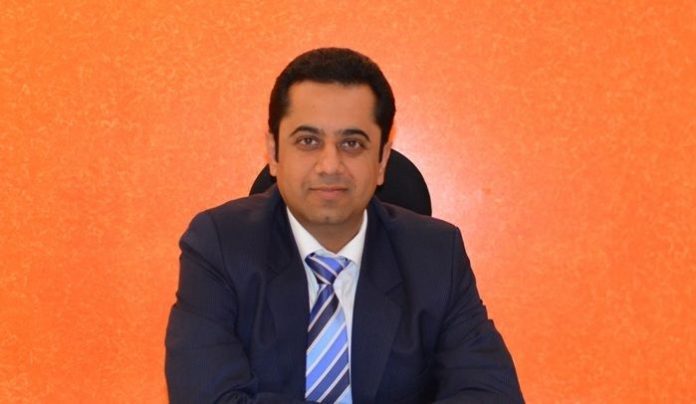The recent influx of new technologies has dramatically reshaped the organisations of today. In order to reap the benefits of modern technology, most of the industries are efficiently moving towards a new-age solution for a better HR organisation. The digitisation revelation, age of AI and machine learning are no more the tools of the sales and operations teams only. HR has adapted and found new ways to amalgamate with the new technologies for talent acquisition and development, performance management and data analytics, within an organisation.
“This evolution has been a gradual process, and now it’s taking up an exponential pace with an objective to improve the overall employee experience. Hence, while the advanced technologies are changing the way companies design and deliver a service, digital is changing the way they hire and manage employees”
While technology strategies are facilitating the HR function towards a progressive future, elements such as social media interaction and learning, real time employee engagement, mobile learning management systems, people analytics and gamification, are taking the some of the space from traditional HR techniques.
As millennials continue to occupy a major chunk of the workforce, technology enablement, digitisation has become the buzz word which relates to this generation whilst performance management and appraisals continue to be a sensitive area for employees.
Technology Driven Performance Assessment
Performance management mind-sets, approaches and technologies are about two things: what’s best for the development, well-being and engagement of your people but also what’s best for the business. Technologies are sometimes seen as impersonal but with performance management, it’s quite the opposite. The right technologies can provide broader, deeper and more personal insights, equipping leaders and individuals to take more informed, intelligent actions.
It is now the reality that manpower optimisation is the order of the day where we have fewer managers and larger teams. To further this point, attention spans are getting shorter and even the demand to receive performance feedback is reducing daily. Annual feedback is gradually getting converted into six-month, quarterly or even monthly segments, with HR having complete insights into performance metrics with performance management tools enabled such as Success Factors and Workboard. Moreover, gamification of tasks is another way HR organisations are able to bind together processes with rewards and recognition.
Technology Enablement in the Area of Performance Management
- Creating a structured and searchable database for people and performance elements – With increased standardisation of performance management processes, the organisation is able to produce accurate annual performance ratings leading to a more transparent and trustful system. This facilitates communication between employees and managers which leads to standard reporting across the organisation.
- Enhancing workplace communication and a more connected environment – making it barrier-free for locations/geographies/cultures with ease of remote connectivity. Manual repetitive tasks are removed which free up time for managers to engage more with their employees.
- Reorienting performance management toward shared outcomes – Performance management is now a present and future-focused view, with the business and its people working together toward mutually, shared outcomes. This gives options of public or private sharing of their goals which can easily be done through digitisation. The underlying assumption is that once you announce your goals to others, you are likely to work towards completing them with higher levels of sincerity.
- Making performance management an on-going process – The new technology is coming with in-built widgets to create monthly, quarterly and half yearly goals which can adjust to the dynamic environments and the culture of the organisation. This brings in freedom and ownership to the employees when they look to build their year’s progression.
- Using technology to provide automated triggers for goals – New workforce technologies are providing real-time intelligence and insights for the supervisor and the employee. This means supervisors can provide timely and focused feedback, and people can analyse and manage their own performance.
- Building specific and customised training and career development plans – Digital tracking systems are enabling employees to pace out their development and provide relevant evidence of completion in order to gain endorsement by their Manager.
- Gamified recognition and motivation systems – Arm people with their own personal digital coaches and auto-analytics apps—and make it a positive, motivating experience. Use new technologies such as virtual reality for both coaching and learning.
Challenges
Whilst there are many advantages when adopting new age technologies, there are challenges as well, which at times become a barrier and slow down the technology adoption process.
1- Missing the human touch: Over use of technology driven processes creates a loss of the human element from the processes along with the rising implications of robotic outputs.
2- Employee redundancy: With machines taking over the iterative tasks, humans are getting freed up from those slow-growth profiles which mean they have more time to develop themselves and get into more strategic and creative work. However, at times, the technology gets seen as a tool, making humans redundant.
3- Security challenge: As the adoption of cloud increases enabling anytime, anywhere access; the risk of data breaches grows with it. This means that there is a lack of control over sensitive, regulated and controlled information shared by and with the employees.
4- Orientation gap: As we proceed with implementing advanced technologies, organisations are faced with the task of training their employees to become more agile when adopting newer technologies. In the absence of proper training, usual operations may be impacted due to a lack of knowledge for these highly technical tools.
Conclusion
With the rise of the intelligent workforce and a broad range of technology available, employees are eager to work with organisations who can offer a digital workplace environment. Therefore, a tech-driven culture places an organisation into a preferred workplace category. While delving deeper into the digital culture, it’s also important to ensure that the new technology tools blend seamlessly with the workflow and empower the employees instead of just adding more complexity and ambiguity to the business operations. Inclusion and diversity are also taking much higher space in the ecosystem as businesses look to create an absolutely transparent system that also connects to the paradigm shift organisations are implementing today.
Reaping the benefits of modern technology, the industry is efficiently moving towards a new-age solution for better talent acquisition, performance management and data storage within an organisation. However, it is critical to ensure that technology should act as an enabler and not as a replacement for humans. Therefore, the secret lies in balancing the amalgamation of efficient technologies leveraging intelligent human interfaces within organisations, which then garner maximum benefits. Innovative HR teams are helping businesses realise the importance of automated performance management and its role in driving higher productivity, enabling collaboration, reinforcing positive workplace behaviour and creating a culture of excellence.









